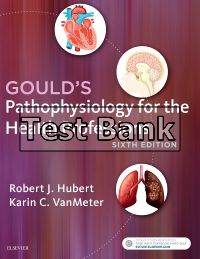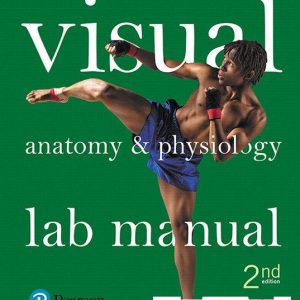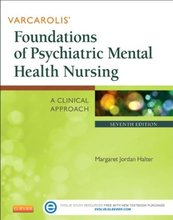This is completed downloadable of Evolve Resources for Goulds Pathophysiology for the Health Professions 6th Edition Hubert Test Bank

Product Details:
- ISBN-10 : 0323414427
- ISBN-13 : 978-0323414425
- Author: Robert J. Hubert
Learn the essential concepts of major diseases/disorders and disease processes. Gould’s Pathophysiology for the Health Professions, 6th Edition is a concise, easy-to-understand introduction to the fundamentals of pathophysiology. Continuing in its well-known tradition of readability and vivid, full-color illustrations, the text is updated with the latest research and trends in human disease. Disorders are described by body system, with coverage of the interactions between systems, and special features help you to apply the material to real-life situations. No matter which healthcare field you may enter, this book provides solid preparation for the conditions you may encounter in clinical practice.
Table of Content:
- Chapter 1 Introduction to Pathophysiology
- What Is Pathophysiology and Why Study It?
- Introduction to Cellular Changes
- Chapter Summary
- Study Questions
- Chapter 2 Fluid, Electrolyte, and Acid-Base Imbalances
- Fluid Imbalance
- Electrolyte Imbalances
- Acid-Base Imbalance
- Treatment of Imbalances
- Chapter Summary
- Study Questions
- Chapter 3 Introduction to Basic Pharmacology and Other Common Therapies
- Pharmacology
- Traditional Forms of Therapy
- Complementary or Alternative Therapies
- Chapter Summary
- Study Questions
- Chapter 4 Pain
- Etiology and Sources of Pain
- Structures and Pain Pathways
- Physiology of Pain and Pain Control
- Characteristics of Pain
- Basic Classifications of Pain
- Pain Control
- Chapter Summary
- Study Questions
- Section II Defense/Protective Mechanisms
- Chapter 5 Inflammation and Healing
- Review of Body Defenses
- Review of Normal Capillary Exchange
- Physiology of Inflammation
- Acute Inflammation
- Chronic Inflammation
- Treatment of Inflammation
- Healing
- Example of Inflammation and Healing
- Chapter Summary
- Study Questions
- Chapter 6 Infection
- Review of Microbiology
- Principles of Infection
- Physiology of Infection
- Chapter Summary
- Study Questions
- Chapter 7 Immunity
- Review of the Immune System
- Tissue and Organ Transplant Rejection
- Hypersensitivity Reactions
- Autoimmune Disorders
- Immunodeficiency
- Chapter Summary
- Study Questions
- Section III Pathophysiology of Body Systems
- Chapter 8 Skin Disorders
- Review of the Skin
- Resident Microbial Flora
- Skin Lesions
- Skin Inflammatory Disorders
- Skin Infections
- Skin Tumors
- Chapter Summary
- Study Questions
- Chapter 9 Musculoskeletal System Disorders
- Review of the Musculoskeletal System
- Trauma
- Bone Disorders
- Disorders of Muscle, Tendons, and Ligaments
- Joint Disorders
- Chapter Summary
- Study Questions
- Chapter 10 Blood and Circulatory System Disorders
- Review of the Circulatory System and Blood
- Blood Dyscrasias
- Neoplastic Blood Disorders
- Chapter Summary
- Study Questions
- Chapter 11 Lymphatic System Disorders
- Review of the Lymphatic System
- Lymphatic Disorders
- Chapter Summary
- Study Questions
- Chapter 12 Cardiovascular System Disorders
- Review of the Cardiovascular System
- Heart Disorders
- Vascular Disorders
- Shock
- Chapter Summary
- Study Questions
- Chapter 13 Respiratory System Disorders
- Review of Structures of the Respiratory System
- General Manifestations of Respiratory Disease
- Common Treatment Measures for Respiratory Disorders
- Infectious Diseases
- Obstructive Lung Diseases
- Chronic Obstructive Pulmonary Disease
- Restrictive Lung Disorders
- Vascular Disorders
- Expansion Disorders
- Chapter Summary
- Study Questions
- Chapter 14 Nervous System Disorders
- Review of Nervous System Anatomy and Physiology
- General Effects of Neurologic Dysfunction
- Acute Neurologic Problems
- Congenital Neurologic Disorders
- Seizure Disorders
- Chronic Degenerative Disorders
- Dementia
- Mental Disorders
- Spinal Cord Disorder
- Chapter Summary
- Study Questions
- Chapter 15 Disorders of the Eyes, Ears, and Other Sensory Organs
- Sensory Receptors
- The Eye
- The Ear
- Chapter Summary
- Study Questions
- Chapter 16 Endocrine System Disorders
- Review of the Endocrine System
- Endocrine Disorders
- Insulin and Diabetes Mellitus
- Parathyroid Hormone and Calcium
- Pituitary Hormones
- Thyroid Disorders
- Adrenal Glands
- Chapter Summary
- Study Questions
- Chapter 17 Digestive System Disorders
- Review of the Digestive System
- Common Manifestations of Digestive System Disorders
- Basic Diagnostic Tests
- Common Therapies and Prevention
- Upper Gastrointestinal Tract Disorders
- Disorders of the Liver and Pancreas
- Lower Gastrointestinal Tract Disorders
- Chapter Summary
- Study Questions
- Chapter 18 Urinary System Disorders
- Review of the Urinary System
- Structures and Anatomy
- Incontinence and Retention
- Diagnostic Tests
- Diuretic Drugs
- Dialysis
- Disorders of the Urinary System
- Urinary Tract Obstructions
- Vascular Disorders
- Congenital Disorders
- Renal Failure
- Chapter Summary
- Study Questions
- Chapter 19 Reproductive System Disorders
- Disorders of the Male Reproductive System
- Disorders of the Female Reproductive System
- Infertility
- Sexually Transmitted Diseases
- Chapter Summary
- Study Questions
- Section IV Factors Contributing to Pathophysiology
- Chapter 20 Neoplasms and Cancer
- Review of Normal Cells
- Benign and Malignant Tumors
- Malignant Tumors: Cancer
- Examples of Malignant Tumors
- Chapter Summary
- Study Questions
- Chapter 21 Congenital and Genetic Disorders
- Review of Genetic Control
- Congenital Anomalies
- Genetic Disorders
- Developmental Disorders
- Diagnostic Tools
- Genetic Technology
- Down Syndrome
- Chapter Summary
- Study Questions
- Chapter 22 Complications of Pregnancy
- Embryonic and Fetal Development
- Physiologic Changes During Pregnancy
- Potential Complications of Pregnancy
- Chapter Summary
- Study Questions
- Chapter 23 Complications of Adolescence
- Review of Changes During Adolescence
- Obesity and Metabolic Syndrome
- Musculoskeletal Abnormalities
- Eating Disorders
- Skin Disorders
- Infection
- Disorders Affecting Sexual Development
- Chapter Summary
- Study Questions
- Chapter 24 Complications of Aging
- The Aging Process
- Physiological Changes With Aging
- Other Factors
- Multiple Disorders
- Chapter Summary
- Study Questions
- Section V Environmental Factors and Pathophysiology
- Chapter 25 Immobility and Associated Problems
- Factors Involving Immobility
- Musculoskeletal System Effects
- Cutaneous Effects
- Cardiovascular System Effects
- Respiratory System Effects
- Digestive System Effects
- Urinary System Effects
- Neurologic/Psychological Effects
- Effects of Immobility on Children
- Chapter Summary
- Study Questions
- Chapter 26 Stress and Associated Problems
- Review of the Stress Response
- Stress and Disease
- Chapter Summary
- Study Questions
- Chapter 27 Substance Abuse and Associated Problems
- Terminology
- Predisposing Factors
- Environmental/Behavioral Risk Factors
- Indications/Recognition of Abuse
- Potential Complications of Substance Abuse
- Treatment for Substance Abuse
- Chapter Summary
- Study Questions
- Chapter 28 Environmental Hazards and Associated Problems
- Chemicals
- Physical Agents
- Biologic Agents
- Chapter Summary
- Study Questions
- Appendices
- Ready Reference 1
- Ready Reference 2
- Ready Reference 3
- Ready Reference 4
- Ready Reference 5
- Ready Reference 6
- Ready Reference 7
- Ready Reference 8
- Ready Reference 9
- Textbooks
- Glossary
- Index
- Handy Tables





